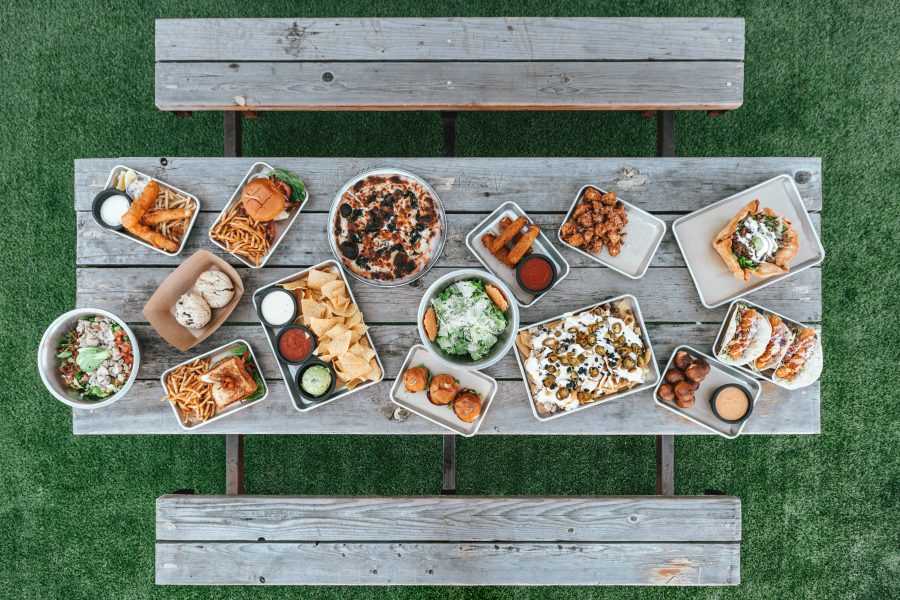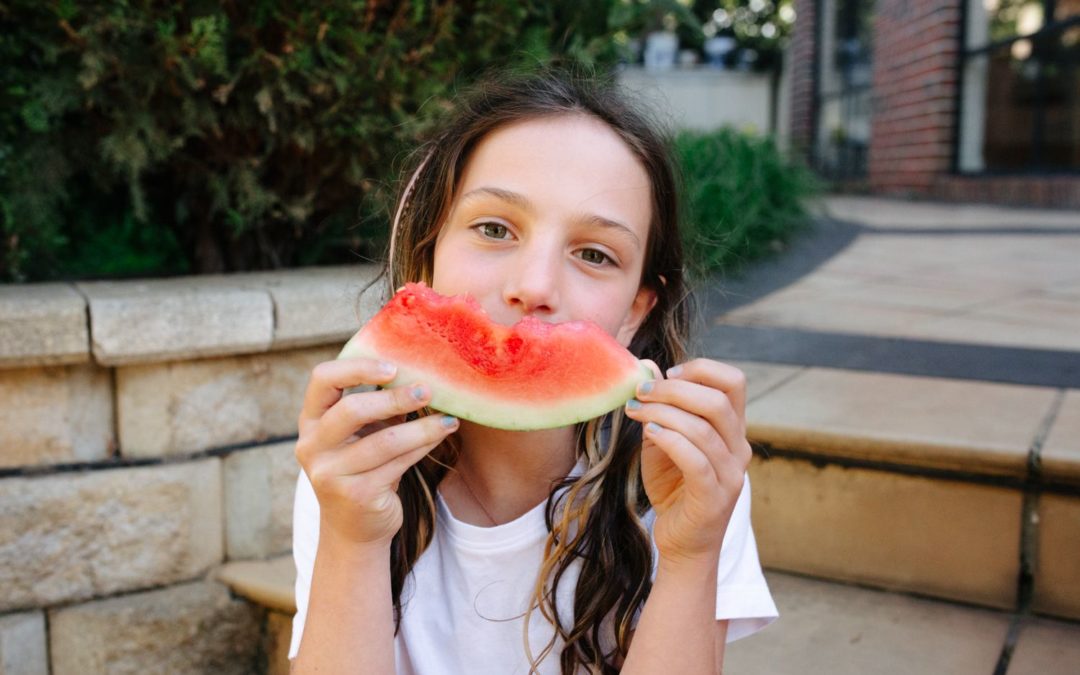While cooking with your kids may require a little extra time, flexibility, mess and patience, with the right mindset, your time in the kitchen can provide your kids with an endless amount of benefits—It may even become a frequent occurrence (which can become a delicious benefit to you!)
The benefits of children helping in the kitchen include:
- Builds practical skills that enable them to grow into confident future cooks
- Provides quality family time
- Improves confidence
- Broadens their palates (reduces fussiness)
- Maintains good health
1. Builds practical skills that enable them to grow into confident future cooks
Allowing your children to cook with you in the kitchen, can help them to develop practical skills that enable them to grow into confident future cooks. A practical skill they can develop is basic cooking techniques. This includes mixing, measuring, and spreading. Learning these skills can aid them in becoming independent cooks in the future.
Cooking at a young age also helps to develop fine motor skills. Fine motor skills involve the use of small muscles that move the hand, fingers, and thumb. These skills help children perform essential tasks like writing, and feeding themselves. By setting a few kitchen tasks, such as stirring and pouring, your child can practice and begin to improve their fine motor skills. (check out Foost’s kids knives here)
Following instructions is another practical skill that can be learnt whilst in the kitchen. Following instructions is an important step in cooking in order to make a tasty meal. However, it can also be a great life skill to learn. Following recipes encourages children to become independent and develop problem-solving techniques.
Helping in the kitchen can provide many learning opportunities for a variety of young cooks. Learning to cook can foster a number of literacy and numeracy skills. Through reading instructions and examining ingredients, kids are improving their reading and comprehension skills. A great tip to encourage reading whilst cooking, is reading the recipes together, and focus on the vocabulary of each word. Stop and think, what does ‘simmer’ mean? In addition to enhancing their reading skills, cooking allows children to boost their math abilities. Cooking exposes children to a range of math problems, including, counting (3 teaspoons), fractions (½ cup), and measurement (using 150mL of water).
You could also practice writing, drawing and procedual text by creating a hand written recipe book of your favourite recipes after you make them.
2. Provides quality family time
Cooking with your children can provide quality family time. It allows you to bond with your kids by spending one on one time. Sometimes this is the perfect time for kids to open up to parents. Cooking at home can also build stronger relationships between siblings. Whilst working together to complete the same goal, children can strengthen their teamwork and communication skills. It’s amazing how well siblings will work together when there’s a yummy treat to be shared at the end.
Working together as a family in the kitchen can help children better understand family recipes, their origins, and the ingredients. Cooking allows them to gain an insight into the differences in food availability and substitutions.
Another approach to develop open communicationand family connection with your children is to ask them about family favourite recipes. For example, “have you ever wondered why nana’s pastry is sooooo yummy, we should ask her for the recipe.”
3. Improves confidence
Giving your child the opportunity to cook, can boost their overall self-confidence. Encouraging them to participate throughout the cooking process is the first step to inspire self confidence. This is followed by family members providing positive feedback on the meals made. Simply allowing children to watch people eat and enjoy the food made, is a great strategy for them to feel a sense of accomplishment and pride. Through this positive process, your child can start to show off their cooking capabilities and develop enthusiasm to try more complex recipes.
Another approach to evoke confidence is to iterate that their help was important. Continue to tell them that they did a great job, or that they completed a step well. On another note, if they helped assemble a meal, you could even name it after them. Serve “Tennille’s pancakes” or “Ethan’s muffins”. This is a great way to spark confidence in their ability.
And if some things don’t go to plan, it is a opportunity to teach resillance and learn from what didn’t go to plan.
Also remember that it is never too late to learn how to cook. Learning to cook is not only for pre-school or primary school aged children. While you have your teenage children home at the moment, try to get them involved too. Check out our age appropriate guide to cooking on what tasks are ideal for each age.
4. Broadens their palates
Allowing your children to get involved in the kitchen helps to expand their palate as they get to experience foods, without any pressure to eat them. In time this will hopefully inspire them to try a variety of new ingredients. This is because cooking exposes children to new food, and gives them the opportunity to engage with all of their senses, i.e., touch, sight and taste. This allows them to become comfortable with the idea of new foods, and overtime can influence them to sample different ingredients.
For children who suffer from fear of missing out, watching other family members eating the ‘new’ food and being told how wonderful it is, may encourage them to try something new and different.
5. Maintains good health
Recent research by the International Journal of Behavioural Nutrition and Physical Activity revealed that eating home cooked meals more frequently was associated with the consumption of a healthier diet. This is a great rationale to start cooking more meals at home with your children. Continuing to cook together can also develop an appetite for home cooked meals in your child.
When cooking with kids, it’s okay to make a mess, in fact, it’s expected.and actually getting messy, helps to reduce fussy eating. But below are a few ways to help you manage the chaos.
Tips for managing mess
- Before you start, tidy up the area where you will be cooking
- Get your child ready – put them in aprons, chef hats, and clothes you don’t mind getting dirty
- Teach them about food hygiene – explain the importance of washing their hands before and in-between cooking
- Teach them to clean up as you go (used dishes into the sink and food scraps into compost or bin)
- Divide responsibilities and give everyone their own task. This prevents fighting, and allows more organisation into the kitchen
- To reduce mess, have a large bowl where your children can throw rubbish, i.e., banana peels, in while cooking. Once done, you can empty the rubbish into the bin
- Give each child a cleaning task to complete once the cooking process is finished. Explain how they would need to do the same thing if they were playing a game
Getting the kids into the kitchen shouldn’t make you want to pull out your hair. Try these simple tips to help you manage any stress.
Tips to manage stress
- Plan ahead – best way to stay organised, and avoid disagreements. Ensure you have all the ingredients before you start
- Take a breathe before you start!
- Take your time – start off with simple recipes, then progress to more complex recipes. Make sure you have enough time to cook so you are less stressed
- Talk through the recipe – with younger children, go through the recipe and explain the steps carefully. If possible, show them a picture of the meal/snack. For older kids, get them to read out loud the ingredients and method. Discuss the process and delegate tasks
- Make it fun – children will enjoy cooking if you make cooking a positive experience
Feeling inspired to start cooking with your children? Here is our age approapriate guide to cooking with kids to help you with ideas and some great recipes to try:
- Make your own Pumpkin scones
- Our yummy Chia pudding
- Have fun baking Donut muffins
- Serve Zucchini pizza bites to the whole family
- Nut-free chickpea cookies that everyone will enjoy
- If your little cooks are confident, have a go at making our veggie slice










